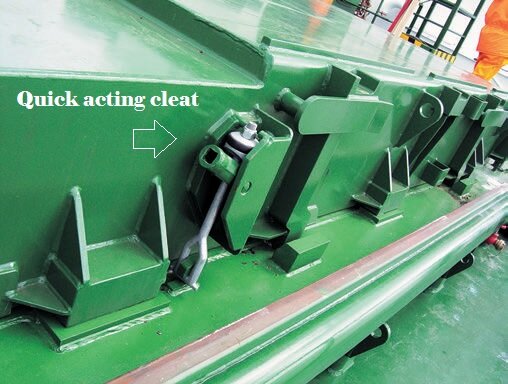
Fig: Side rolling steel hatch cover


Mechanical steel hatch covers arrangement and watertight integrity onboard a bulk carrier
Ships structural problem because of corrosion & metal fatigues - related countermeasures
Classification Society Establishes Design Standards For Bulk Carriers
High rate of corrosion at sea and preventing methods
Corrosion prevention methods for bulk carrier
Maintenance procedure for mechanical steel hatch covers
Steel hatch cover maintaining watertightness - Classification society guideline
Structural standards & strengthening of bulk carriers
Our detail pages illustrated many safety aspects of Bulk carrier
Home page |||Bulk carrier types ||| Handling of bulk coal |||Cargo planning ||| Carriage of grain |||Risk of iron ores |||Self unloading bulk carriers |||Care of cargo & vessel |||Cargoes that may liquefy |||Suitability of ships |||Terminal guideline |||Hold cleaning |||Cargo cranes |||Ballast handling procedure |||Bulk carrier safety |||Fire fighting systems |||Bulk carrier General arrangement
Related Information